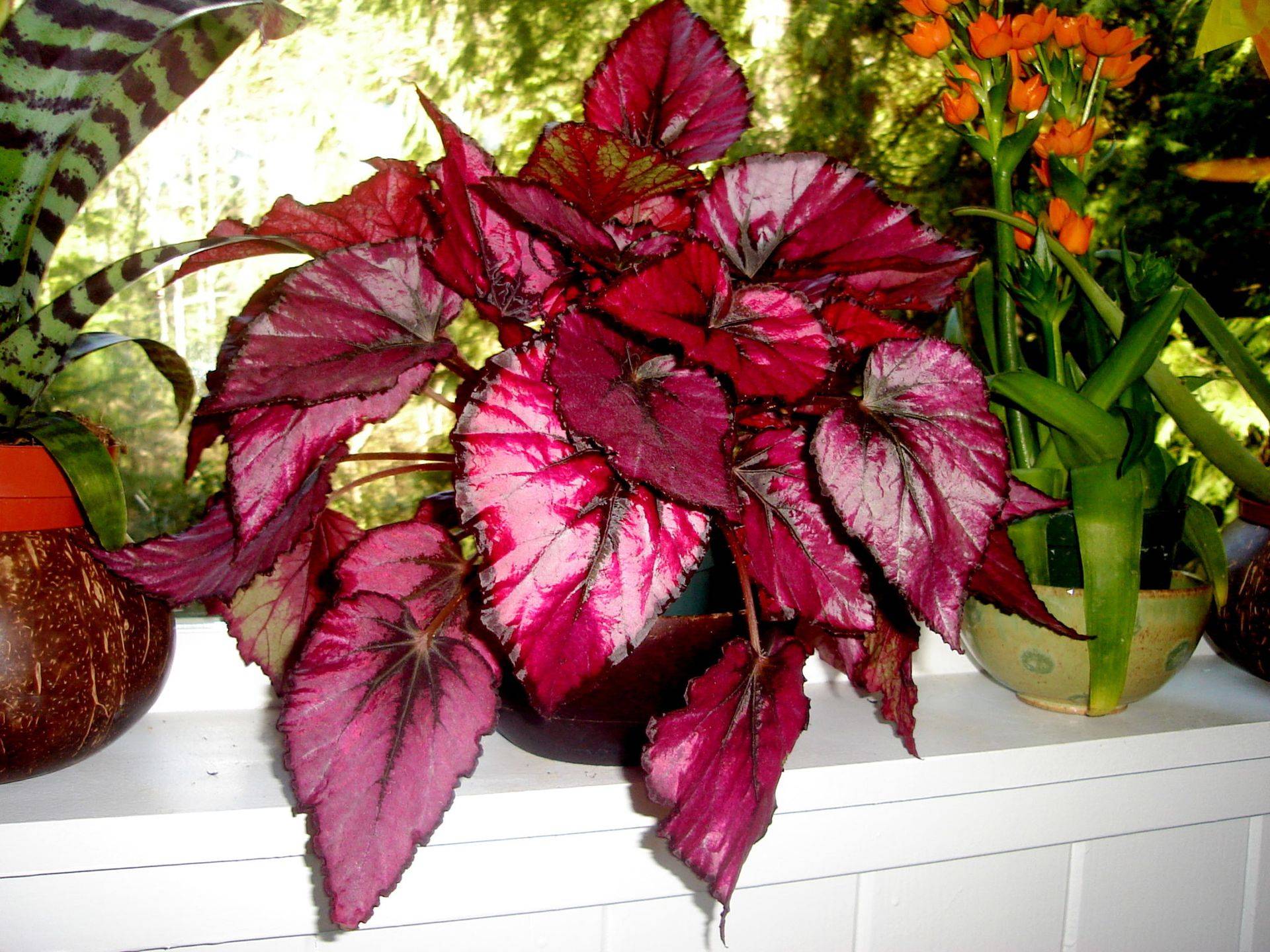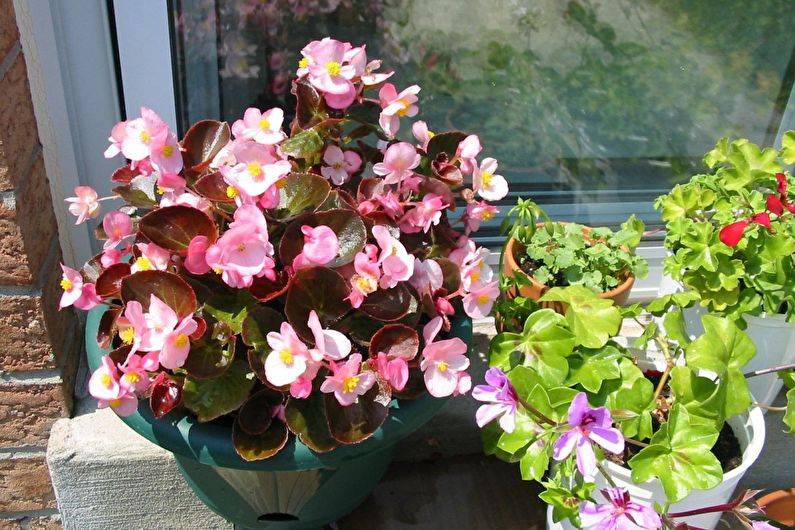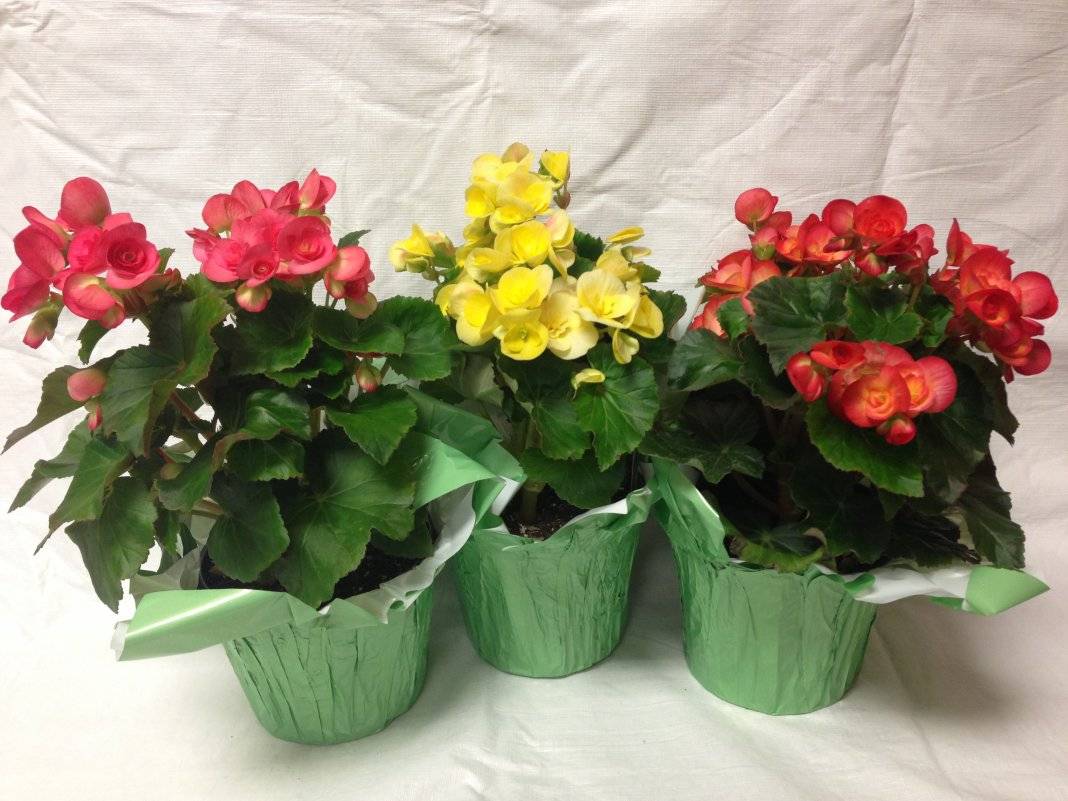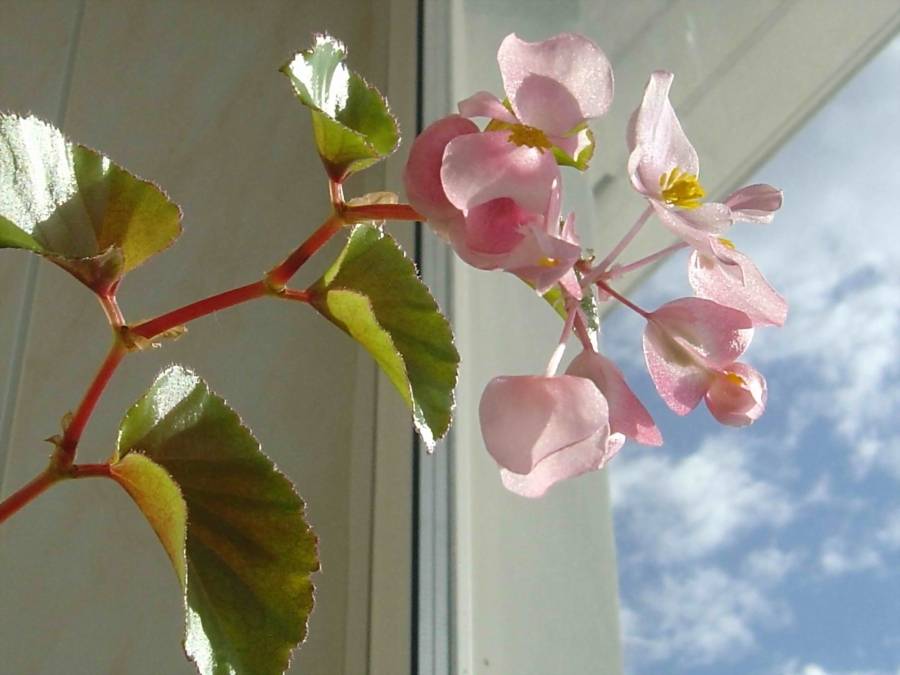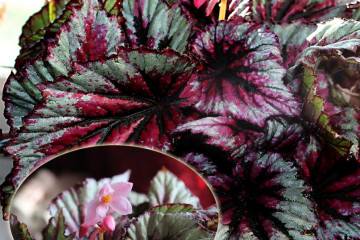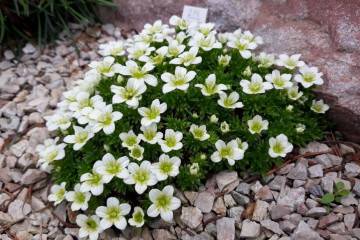Tiger begonia - growing and care at home
Content:
One of the popular home flowers is tiger begonia. Due to its unpretentiousness, attractive color and coloring of the sheet, it looks very elegant. It is a hybrid bred by crossing.
What does tiger begonia look like, which family does it belong to?
Begonia tiger belongs to the Begoniev family.
It is a compact bush with an erect, highly branched stem, the height of which reaches 30-40 cm. The leaves are asymmetric and have an intense variegated color.
Tuberous rhizomes, slightly thickened.
Common varieties
Begonias can be deciduous, bush, tuberous, liana, or ever flowering.
Deciduous plant species are suitable for growing at home. The most decorative are:
- Royal (Rex);
- Metallic;
- Bauer;
- Mason;
- Cleopatra;
- Collar.
Among the bush varieties, the most popular are:
- Crispi Margarita;
- Dark Red;
- Rosebud.
Healing properties
Bauer's begonia tiger may have medicinal properties. The following useful properties are distinguished, which it possesses:
- secreted phytoncides fight infections in the air of the room;
- plants of this variety emit positive energy, and negative waves transform and absorb. This is useful for places where communication irritation often reigns.
Briefly about the history of appearance
Today the genus of begonias has more than 1000 species. Their homeland is tropical forests, located about 3 km above sea level. The widest range is found in South and North America, the Himalayas and Asia.
Around the middle of the 19th century, several types of begonias were discovered, such as royal, Bolivian, Veich's begonia and Pierce's begonia.
Features of tiger begonia care at home
Begonia is a rather unpretentious flower, but still it needs to provide certain conditions and care for it so that the leaves have a more saturated and contrasting color.
Temperature
Hot climates are suitable for begonias. Therefore, you should not allow the temperature to drop below 18 ° C. The lower the temperature indicator, the less likely the bush will bloom.
Lighting
It is better for the plant to provide a sufficient amount of light, but still without excess. It is best to expose the flower to the southwest or northeast side.
Watering
Water with settled water. It is desirable that it is not tough. Avoid getting drops of water on the plane of the leaves, otherwise unaesthetic stains will appear on them.
An excess of moisture leads to decay of the root system. Therefore, it is necessary to add water in the warm season during the growing season of the plant; this should be done only after the top layer of the soil has dried.
In winter, watering is minimized.
Spraying
But the humidity in the room should be high.
Humidity
Soil moisture should be kept at an average level during the warm season. And in winter, the soil should be predominantly dry.
Priming
Pick up light soil, enriched with peat. This kind of begonia grows best.
Top dressing
For leafy begonias, nitrogen fertilizers can be used, which will activate the green mass.
But for those who throw out color, it is better to use phosphorus and potassium as top dressing.
Features of care in winter, dormant period of tiger begonia
Begonia does not have a pronounced dormant season, especially for leafy varieties. But it must be borne in mind that in winter there will be less light, and the leaves will begin to stretch. To avoid this, it is necessary to reduce watering and lower the temperature.
When and how it blooms
Most begonias bloom in small, bright flowers, predominantly warm in color. The petals resemble rose petals. Intense flowering begins with the onset of summer. Lasts about 3-4 months.
Additional Information! Outdoor begonia blooms less than its domestic counterparts.
Types of flowers
Flowers can be collected in pairs or in clusters.
Flower shape
In shape, they can be small with a single-row arrangement of petals.
In others, belonging to the flowering flowers, the flowers reach more than 10 cm in diameter. Their petals are collected in several rows, and represent a double rose.
Flowering period
In the warm season, tiger begonia begins to bloom en masse. At home, this can be from late spring to mid-autumn.
On the street begonia blooms only in summer and in September, if the month turned out to be warm enough.
Changes in care during flowering
It is advisable to fertilize 2 times a month with phosphorus-potassium fertilizers to enhance the ejection of buds and the formation of beautiful flowers before budding and during the period of active flowering.
Also provide the desired level of lighting. In this case, the flowers will be brighter.
Pruning
Tiger begonia is unpretentious, so home care is extremely simple. The bush needs to be pruned. This is what allows you to grow a beautiful, healthy houseplant.
You need to start forming a bush from a young age. After reaching a height of approximately 7 cm, the top must be cut off.
Further pruning is done as the bush grows.
How tiger begonia reproduces
This plant propagates quite easily - with the help of cuttings, dividing a bush or stems, as well as lateral layers.
Germinating seeds
Seeds can be grown throughout winter and early spring. Plant them in soil enriched with peat and sand.
When a young sprout grows, it must be transplanted into a container of an appropriate size. Begonia will bloom, with successful cultivation, already in the same summer.
Rooting cuttings
In the warm season, begonias can be planted with cuttings. This requires:
- cut off the stalk, the length of which will be at least 6 cm;
- the cut should be at an angle;
- then plant the cutting in the soil enriched with peat in a ratio of 3: 1;
- if everything is done correctly and the plant from which the cutting was cut is healthy, then after 2-3 months the plant will form a small bush.
Air layering
Both bush and ever-flowering begonias can be propagated by dividing the bush. They also use air layers, which are formed in an adult plant. They must be cut at the base and then planted in suitable soil.
Other options
Also, begonia is one of the few plants that can be propagated using leaves. This is especially effectively observed in decorative leafy species.
Transfer
It is necessary to transplant the plant as the bush grows. It is better to do this in the spring. The main signs that signal that a pot change is required are protruding roots.
Possible growing problems and diseases
If there is too much moisture in the soil, then the flower is attacked by powdery mildew. To avoid this, you need to carefully examine the plant, especially in the middle of the bush and on the lower leaves.
Also, black rot can occur in this place. If such a problem is found, then the amount of water applied under the plant should be reduced.
Aphids or spider mites, which also attack this plant, are destroyed by Intavir or Karbofoska.
Drops buds and leaves
If the buds do not bloom, but are immediately discarded, it means that watering is not carried out correctly and there is not enough minerals.
Leaves turn pale
A pale plate is a sign of low light levels.
The tips of the leaves dry
This means the begonias are lacking moisture.
The lower leaves fall
If the lower leaves turn yellow and become unattractive, then the plant lacks the proper level of nutrition. Also, perhaps these are signs of parasites.
Pests
The spider mite forms a noticeable mesh on the leaves. And aphids accumulate on the branches. Therefore, in order to notice the signs of pests in time, it is necessary to carefully inspect the bush periodically.
To get rid of them, it is best to use store-bought drugs. Dilute according to the instructions.
Other problems
If the flower does not want to bloom, then the lighting level should be increased and mineral fertilizers added, since the soil in this case is most likely not suitable. Also, the flower must be given a rest period.
Signs and superstitions
It is believed that this flower is able to preserve family well-being and have a beneficial effect on the appearance of family members.
Of the negative signs associated with begonia, the following is the most popular. If the donated plant begins to wither, then the owners of the house may get sick.
In general, begonia is an unpretentious plant. But without proper care, it will not be possible to grow a healthy flower.
